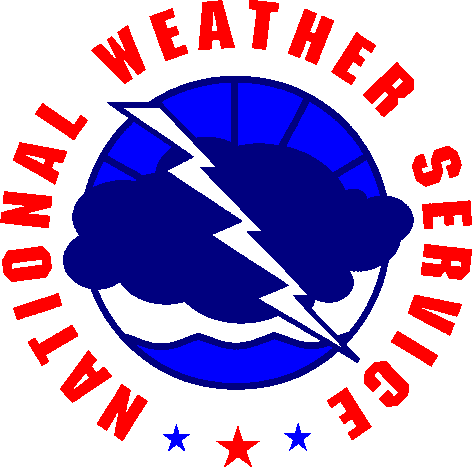|
Winter is long and summer is short in the 8.4 million acre Gates of the Arctic National Park & Preserve in northern Alaska. Flanked to the north by the North Slope and Arctic Coastal Plain, and to the south by the Yukon River upland drainages of northern Interior boreal forest and wetlands, the climate of the area is a land of extremes. Your ability to deal with the rapidly changing weather in and around Gates of the Arctic National Park & Preserve could well determine the level of satisfaction you derive from your trip into the Arctic. Be prepared for rapid, severe changes in the weather. One sudden rainstorm, in or near your travel region, can cause streams and rivers to rise suddenly. In the mountains, far from the trees of the lowlands where wildfires create their own weather, rising thermals can cause severe lightning, hail, and torrential rain storms. Since most travel in the park and preserve involves river and stream crossings, it is important to consider potential changes in water levels. Choose your clothing, gear, and amount of food with great care, as the weather often changes rates of travel, routes, and pickup schedules. On the south side of the Brooks Range below timberline at about 2500 feet, the climate is generally classified as sub-arctic, with exceptionally cold winters far below zero degrees, relatively warm summers, low annual precipitation, and generally high winds. Precipitation averages 12-18 inches in the west and 8-12 inches in the east. Moving north and across the Continental Divide in the Brooks Range, the northernmost mountain chain in Alaska, the elevational range of the park (1,000 to 8,000+ feet) produces local variations in weather and climate. On the north side of the Brooks Range above timberline, at about 2,500 feet,, the climate is generally classified as arctic with cooler summers, slightly warmer winters (-20 to 0ºF at higher elevations due to prevailing cold air inversions), even less precipitation, and increased winds, compared to the sub-arctic landscape below and within timberline on the south side of the park. Precipitation is extremely light, about 5-10 inches per year, making it essentially an “arctic desert.” Generally speaking, winter temperatures range from 0 to -50ºF, the warmth of the sun returns in March, rivers are usually free of ice and runnable in mid-June, snow and freezing conditions happen in every month of the year, and the first significant snows return to the mountain slopes in late-August, blanketing them by mid-September. Always be prepared for colder-than-expected conditions. Spring:February through April is a good time for winter travel with skis, snowshoes, or dogs. Thawing generally begins in late April. The month of May is considered ‘break-up’, when the ice on the rivers is getting soft and mushy and starting to break apart. It is not possible to do any backcountry travel that involves river crossings during break-up. The exact time of break-up is dependent on weather and the amount of ice and snow accumulated over the winter. Depending on weather and elevation, snow cover is mostly gone by June, although it can persist in some areas. Summer:Mid-June to September is usually the best time for backpacking and hiking. July through August is generally the best time to take float trips. The central Brooks Range has and relatively short, cool summers. The entire region receives continuous sunlight during the summer for at least 30 days, and there are long days of daylight for months on either end. Thunderstorm activity is common during June and July. July through September is the wettest time of year and prevailing winds are out of the north. Freezing temperatures may occur at any time of the year, but particularly from mid-August on. Be prepared for wet ground and possible cold weather in June. July may be the only month that snow does not fall. Insect protection is a must during the summer months. Fall:Fall is usually very brief, and filled with vibrant colors. Freezing temperatures start occurring in mid-August and rivers generally freeze by mid-September to early-October. Local air taxi operators pull their float planes out of service on September 23. Winter:November through March is the best time for viewing the Aurora Borealis. The central Brooks Range has long, severe winters. Snow falls during 8 or 9 months of the year, averaging 60-80 inches. Average minimum and maximum winter temperatures are -67F and 33F. Snow has been recorded in every month of the year and the annual average is 45 inches. Winter travel presents additional difficulties, such as ice crossings, potential avalanche conditions and extreme temperatures (-50F or colder). As always, be sure you’re prepared with the properly rated equipment and skills necessary to deal with these extreme conditions. National Weather Service ForecastsClick on a map area for a Zone Area Forecast from the National Weather Service
View the current conditions at the following locations in Gates of the Arctic:Upper North Fork Koyukuk Upper John River Arrigetch Killik Pass Noatak River
Other ForecastsRiver Flow Forecasts by the National Weather Service for Gates of the Arctic. Koyukuk River flow reading below John River (at Old Bettles) provided by the river gage cooperatively managed by the National Park Service and US Fish and Wildlife Service. Alaska Aviation Weather Forecasts by the National Weather Service. Alaska Weather Webcams, including Anaktuvuk Pass, Bettles, and Coldfoot. Alaska Aurora Forecast by the University of Alaska - Fairbanks Geophysical Institute. Gates of the Arctic Weather InformationLoading weather forecast... Loading weather forecast... Loading weather forecast... |
Last updated: November 15, 2022

